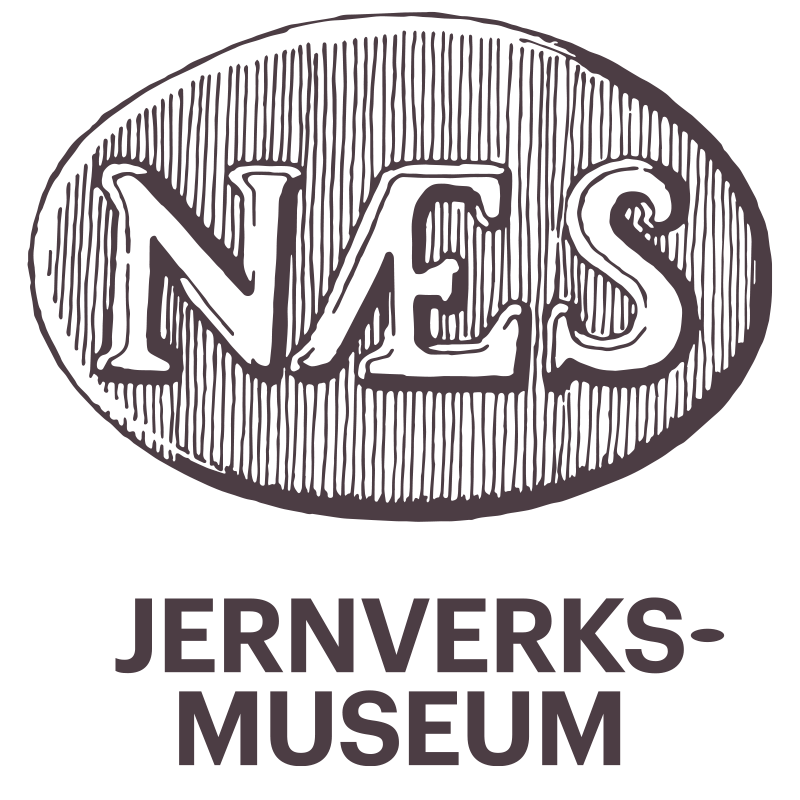Næs Ironworks Museum
300 years of iron and steel production
Næs Ironworks Museum in Tvedestrand municipality is located on the southern coast of Norway and is the site of a unique premodern ironworks dated back to 1665. Most of the industrial buildings, including machinery and equipment, and some of the workers’ houses are preserved or have been reconstructed. Today the old ironworks is a unique museum.
Film and guided tour
All guided tours start with an introductory film in English about iron production in the old days, presenting authentic film footage of iron and steel production based on premodern technologies. The visit continues with a guided tour in and around the old production buildings where you can experience the operational water wheel and bellows. This opens for a unique opportunity to see how an ironworks was organized, how people lived and worked there, and how iron and steel were produced back in the day.
The museum has a little giftshop and a café serving traditional pastry called “munker”.
Opening hours
Sunday from 1.may- 25.may
Open every day from 1.june to 21.september
Guided tours every hour between 11 AM to 4 PM. (closes 17th of May)
Tickets (2025)
Adults 120 NOK,
Children/ students (6-18) 90 NOK,
Familie ticket 300 NOK.
Adresse
Næs Jernverksmuseum, Jacob Aalls vei 10, 4934 Nes Verk. Tel. +47 37 16 05 00.
What made the ironworks famous?
The main product of all the old ironworks was wrought iron, sold in rods of varying dimensions. However, Næs Ironworks is mainly renowned for its production of elegant stoves, dating back to the 18th century and first part of the 19th century. From 1860 onwards the manufacturing of special high-quality steel was predominant.
A varied activity
Apart from being one of the largest premodern ironworks in Norway, Næs Ironworks, to a large extent, refined its own raw materials. There were foundries, steel mills, rolling mills, a forge, a mechanical workshop, and factories producing files, horseshoes, horseshoe nails, and axes.
In the second half of the 19th century, about 140 workers were employed at Næs Ironworks. In addition, there were numerous workers and suppliers working in iron ore extraction, charcoal production, and transportation of products and supplies.
All in all, there were about 40 ironworks in Norway based on hydro energy, iron blast furnaces and charcoal technology between 1624 and 1909.
Establishing a museum
On Friday, November 13, 1959, a massive flood destroyed the dam that supplied the ironworks with hydro energy. The flood brought all industrial operations to a close. Immediately after the close-down of all industrial activities, efforts were made to preserve the plant as a site of technical and cultural heritage. In 1993, the museum was formally opened to the public.
Other places worth seeing
The cultural landscape, the museum premises, and their surroundings have not changed noticeably over the past 150 years. The old romantic park "Lunden" with the river “Storelva” is a nice place for strolling and picnics. There are marked-up paths leading to the old workers' houses, and the adjacent golf course at Nes Verk is one of the largest and most beautiful in all of Norway.
“Solberg gruve” is an iron ore mine approximately 3 km from the ironworks museum. The mine was operative in the 18th century and closed in the 1860s. The mine delivered iron ore to the blast furnace at Nes and is approximately 180 meters deep. Guided tours in the mine are on Sundays during the summer season.
The Tvedestrand museum in the town Tvedestrand has a history closely linked to the history of the ironworks. The building is one of the oldest (1775) and best preserved in town. It was built for one of the managers at Næs Ironworks. He dealt with transporting goods in and out of the ironworks. The town museum displays exhibitions, a country store, and an old pharmacy. From the end of June until the beginning of August, the museum is open every day from 12 am to 4 pm.
“Beautiful museum! Such interesting guided tour w/friendly, very knowledgeable guide. This museum so rich in local, southern Norway’s history: a must see! ”

